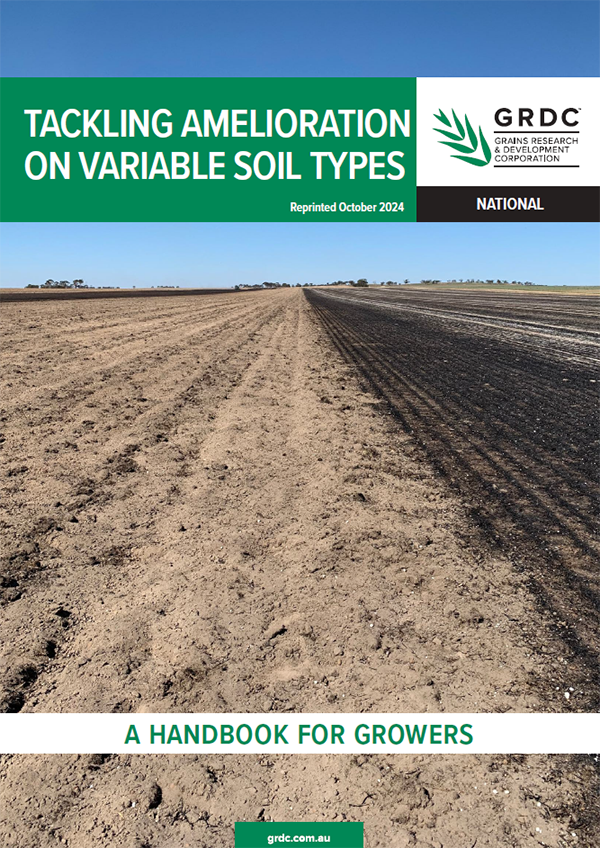Tackling amelioration on variable soil types
Tackling amelioration on variable soil types
Published: 3 Oct 2024
Soil constraints are estimated to cost Australian growers more than $1 billion each year in wheat alone (Orton et al. 2018). Done properly, ameliorating soils boosts yield and profit.
While research into and uptake of soil amelioration has increased in the past few years, there are still some barriers that prevent growers from tackling soil problems. Soil variability, cost and deciding where to start are the commonly cited reasons.
Paddocks with multiple soil constraints and variable soil types are tricky to manage. Choosing the ideal amelioration option for every soil constraint within the paddock can create a patchwork of different operations, machinery, inputs and management. This can make tackling soil constraints seem like a hassle not worth going through, even before considering if profit gains make that hassle worthwhile.
Yet many growers are successfully ameliorating soil constraints in variable paddocks. While the ideal solution is just that – ideal – and may not be practical, good profit gains are still possible from smart soil amelioration in variable paddocks. Where there is limited time, budget or available machinery, or there is just too much variability, paddocks can still be ameliorated using the best compromises of operations, machinery, inputs and management.
Want a hard copy?
GRDC produces a range of publications to share the RD&E knowledge generated from our investments with grain growers and the broader industry.
Printed publications
Printed copies of some publications are available for growers, advisers and farming systems groups, for personal use and distribution at GRDC events.
Contact GroundCover Direct on 1800 11 00 44 or email ground-cover-direct@canprint.com.au to request copies. Publications are free but postage and handling costs may apply.
Download PDF
Region: National
GRDC Project Code: PLT1909-001SAX,

